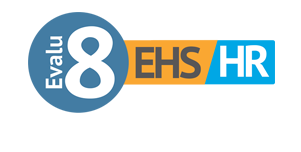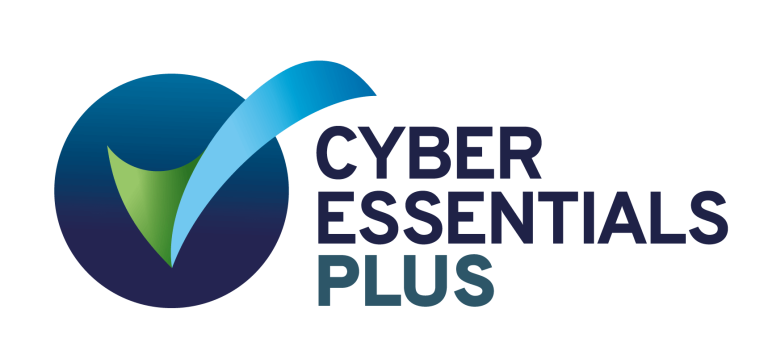
Choosing the right EHS software is essential for UK rail and public transport operators looking to stay compliant, manage risk, and streamline safety processes. With strict railway regulations, fatigue management requirements, and complex maintenance workflows, having an effective can make all the difference.
But with so many options available, which software is the best fit for rail and public transport teams?
In this guide, we compare the top 8 EHS software solutions for UK rail and public transport in 2025, evaluating their features, compliance capabilities, and suitability for track maintenance crews, depot staff, and operations teams. Whether you need live RAMS tracking, fatigue monitoring, or mobile-friendly inspection tools, this list will help you make an informed decision.
Helpful summary
Overview: This article, brought to you by Evalu-8 EHS, offers a detailed comparison of the top 8 EHS software platforms tailored to rail and public transport organisations in the UK. It explores core features, fatigue management strengths, pricing approaches, and suitability for track maintenance, depot operations, and live-line work.
Why trust us: At Evalu-8 EHS, we specialise in supporting rail sector clients with modular safety software designed for high-risk environments. Our team understands the challenges of live track work, fatigue monitoring, COSHH for lubricants and cleaning fluids, and dynamic risk assessment updates.
Why it matters: With stringent railway regulations and a zero-tolerance approach to safety failures, the right EHS software can be the difference between flawless compliance and costly incidents. Get this decision right, and you’ll reduce risk, improve visibility, and empower frontline teams to work safely.
Action points: Use this guide to assess which EHS platform aligns with your organisation’s rail service size, work complexity, and compliance goals. Whether you need real-time RAMS completion logs or integrated fatigue tracking, this article will help you confidently move forward.
Evalu-8 EHS: Best all-in-one EHS software for rail and public transport
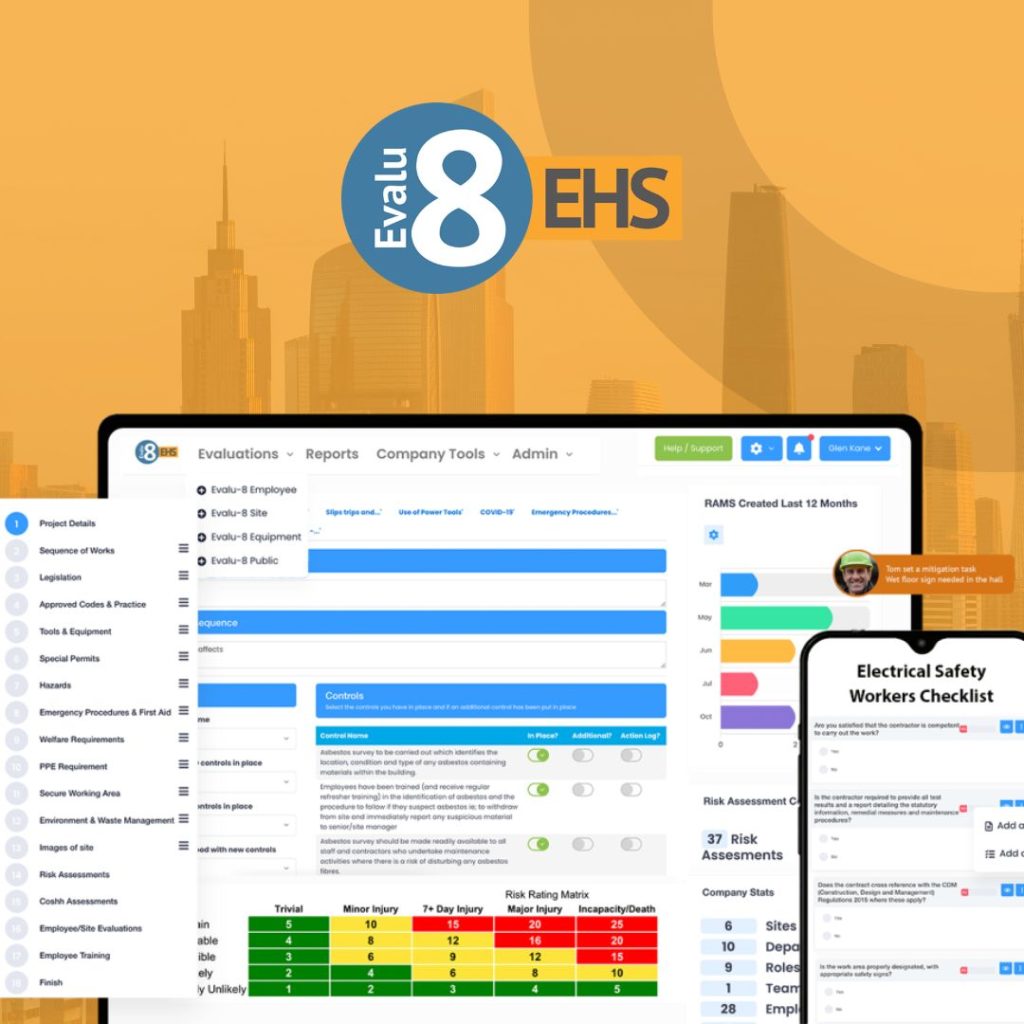
Why Evalu-8 EHS stands out
Evalu-8 EHS is a modular, all-in-one health and safety platform built specifically to meet the needs of UK rail and public transport organisations. Designed for track maintenance teams, depot managers, and operations coordinators, the system is scalable and highly customisable. It centralises RAMS, fatigue management, inspections, and incident reporting on a single platform.
Evalu-8 EHS offers a clean interface, full mobile accessibility even offline, and real-time visibility across multiple work zones. Its focus on fatigue risk tools, live dashboards, and automated alerts makes it an ideal solution for rail environments where shift patterns and moving work sites demand constant oversight.
Core Features
Risk assessments: Easily create, assign, and review dynamic risk assessments with built-in templates tailored to live rail work
RAMS: Generate and store detailed RAMS specific to possession work, live track operations, and emergency tasks with sign-off tracking
COSHH management: Create, store, and monitor COSHH assessments for track grease, paints, diesel, and cleaning fluids
Equipment & asset management: Track inspections and maintenance of rail-mounted plant, harnesses, and tools with scheduling and reminders
Accident & incident reporting: Log incidents from slips, electrical contacts, and plant collisions with photo uploads and configurable workflows
Safety audits & inspections: Build inspection checklists for PPE audits, track-side checks, and depot walkthroughs with version history
Training management: Maintain a digital training matrix, track expiry dates for fatigue awareness training, assign eLearning modules, and store certificates
eSignatures: Enable staff to digitally sign off on RAMS packs, fatigue policy acknowledgements, and isolation forms via mobile
Mobile app: Technicians can access documents, complete forms, conduct inspections, and report incidents on the go, even in low connectivity
Advanced features
Fatigue risk management: Monitor work hours, track high-risk patterns, and trigger warnings when staff approach safe working limits
Multi-site management: Group data by work sites, depots, or track sections for easier oversight and compliance tracking
Real-time dashboards: Customisable dashboards provide live data on RAMS completion rates, fatigue breaches, incident trends, and inspection gaps
Automation & alerts: Assign recurring tasks such as equipment inspections or fatigue reviews and receive automated alerts for overdue actions
Document control: Store policies, procedures, and isolation forms with version control and access permissions
Take a quick look around key areas of Evalu-8 EHS
Pricing
Core modules start at £2.50 per user per month. Add-ons are available such as RAMS, COSHH, Audits and Inspections and more. Pricing is tailored to the number of users, sites, and selected modules. UK rail organisations are encouraged to request a short demo and custom quote.
Pros & cons
Pros:
Scalable and modular for rail and depot operations
Comprehensive fatigue management tools and mobile access
Real-time dashboards for live track and zone visibility
Automated alerts for overdue tasks and expiring documents
Strong UK-based support and regular updates
Cons:
- Advanced reporting may require configuration support
Integration with complex rostering systems may need custom work
#2 RAMS App
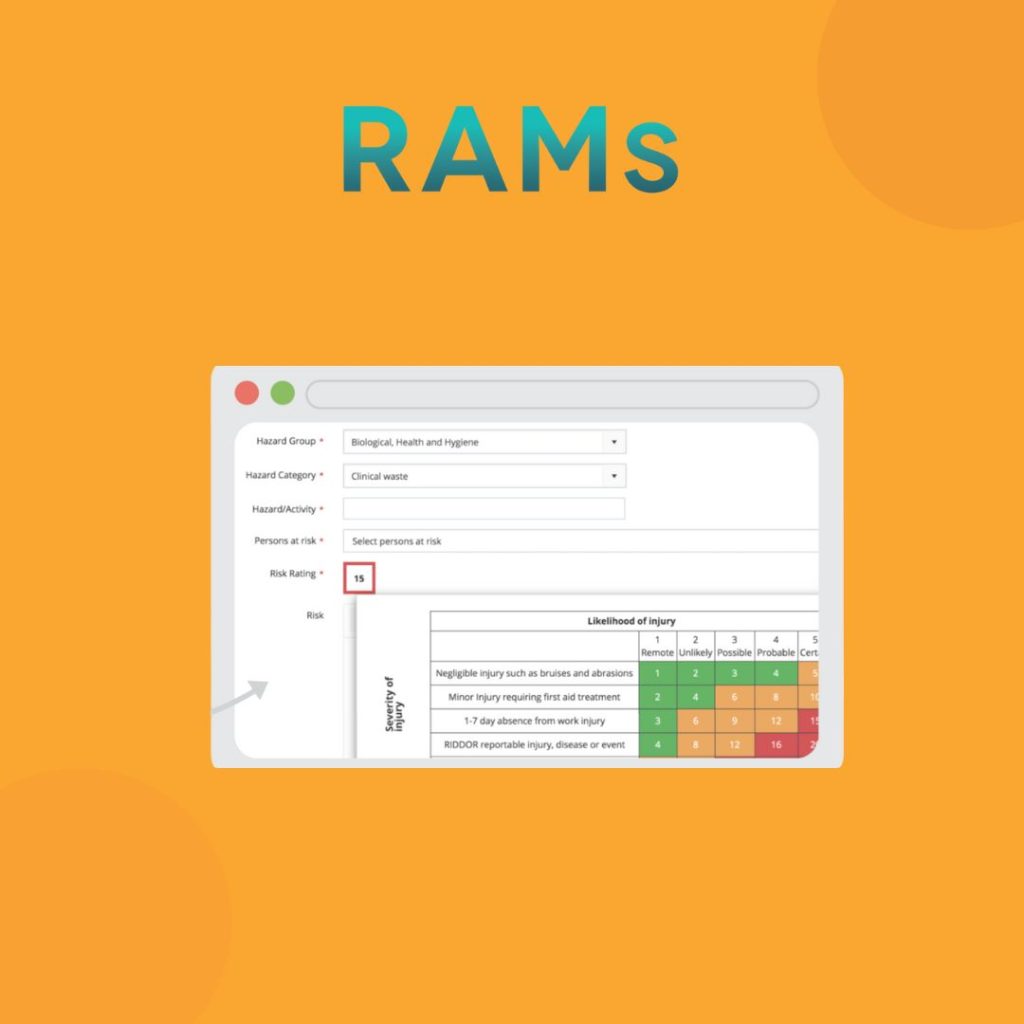
RAMS App is a cloud-based solution focused on generating risk assessments and method statements (RAMS) quickly and efficiently. For rail possession managers and track contract teams who require up-to-date method statements at every shift change, RAMS App offers an extensive library of pre-written content and mobile-first design. It allows frontline staff to create, edit, and issue RAMS packs on site without returning to the office.
RAMS App excels in fast turnaround for live rail operations where work zones move daily. Its simplicity ensures that even non-technical staff can produce compliant RAMS and method statements in minutes
Core features
Risk assessment builder: Create, edit, and issue RAMS from any device using pre-written templates or custom content
Method statement templates: Access editable templates tailored to rail tasks such as possession work, overhead line projects, and depot maintenance
COSHH assessments: Choose from thousands of assessments or create your own for track greases, paints, diesel, and cleaning fluids
Toolbox talks & training records: Deliver and track toolbox talks on fatigue awareness, electrical hazards, and isolation procedures
Digital signatures: Secure documents with e-signatures to ensure accountability and compliance
Multi-user access: Assign roles, control access levels, and collaborate across teams in real time
Pre-made templates: Access a library of forms including site audits, PPE checklists, and isolation forms
Advanced features
Custom trade group libraries: Tailor content by rail trade or activity type to speed up RAMS generation
Document duplication & archiving: Reuse existing method statements for similar tasks and archive outdated packs for audit history
Cloud storage: Access and store all documents securely in the cloud, from any device, including offline access
Constraints and functionality gaps
Limited incident reporting: RAMS App is focused on RAMS and method statements. It does not offer full incident management or fatigue tracking modules
Integration gaps: The platform operates as a standalone solution. Integration options with broader EHS systems or crew rostering tools are not widely supported
Specialist rail requirements: While templates cover common rail tasks, highly bespoke procedures (such as complex isolation protocols) may need manual template adjustment
Pricing
RAMS App offers flexible pricing based on business size and user needs. For single users, pricing starts at £399 per year (excluding VAT). Multi-user plans are tailored to the number of users and modules required. A free trial is available for rail organisations to evaluate the platform.
Pros & cons
Pros:
Rapid creation of RAMS and method statements on site
Extensive library of rail-specific content and templates
Mobile-friendly with offline access for remote track locations
Digital signatures ensure compliance and accountability
Cons:
No built-in incident or fatigue management tools
Limited integration with other EHS or rostering systems
Complex isolation procedures may require manual template edits
#3 EHS Insight

EHS Insight is a cloud-based platform designed for organisations seeking deep customisation and advanced analytics. Rail and public transport operators benefit from its AI-driven tools that enhance data quality and simplify analysis. EHS Insight supports dynamic risk assessments, site inspections, fatigue tracking, and comprehensive reporting.
For rail operations, the ability to configure fatigue review triggers, link hours worked to risk levels, and analyse near misses across depots and track sections provides actionable insights to prevent incidents before they occur.
Core features
Incident management: Facilitate reporting, tracking, and analysis of fatigue incidents, slips, electrical contacts, and plant collisions
Audit and inspection management: Schedule and conduct inspections with customisable templates for PPE audits, track-side checks, and depot walkthroughs
Risk assessment: Identify, evaluate, and mitigate potential risks such as live rail hazards, work at height, and fatigue exposure
Training management: Monitor employee training programmes, ensure competency, and manage fatigue awareness certifications
Document management: Provide secure storage, version control, and easy access to RAMS packs, isolation forms, and fatigue policies
Compliance management: Track regulatory requirements for rail safety standards and trigger automated review reminders
Mobile accessibility: Enable offline data capture for inspections, incident reporting, and fatigue logs in low connectivity areas
Advanced features
AI-driven tools: Use machine learning algorithms to identify data anomalies, predict fatigue risk patterns, and prioritise high-risk zones
Customisable dashboards & reporting: Create real-time analytics and interactive dashboards for fatigue breaches, incident hotspots, and audit outcomes
Behaviour-based safety: Promote proactive safety culture by monitoring and encouraging safe behaviours through targeted campaigns
Constraints and functionality gaps
Learning curve: The platform’s extensive features and customisation options may require time and training for new users to become proficient
Customisation resources: Significant configuration may be needed to align with rail-specific fatigue policies and shift patterns; may require consultant support
Cost considerations: Tailored pricing reflects the advanced analytics capabilities but may be higher than simpler, out-of-the-box solutions
Pricing
EHS Insight offers tailored pricing based on the number of employees, selected modules, and specific organisational requirements. For mid-sized rail operators, pricing starts at approximately £3,500 per year for core incident, audit, and fatigue modules. Larger organisations with advanced analytics needs should contact EHS Insight for a customised quote.
Pros & cons
Pros:
Deep customisation and advanced analytics for rail safety and fatigue management
AI-driven insights to predict fatigue risk patterns and emerging hazards
Mobile offline capabilities for track and depot environments
Robust compliance management with automated review reminders
Cons:
Higher learning curve and configuration effort for new users
Advanced features may increase total cost of ownership
Customisation may require external support or consulting
#4 Protecting

Protecting is purpose-built for high-risk industries that require live monitoring of working conditions and fatigue risk. In rail and public transport, Protecting’s wearable-compatible fatigue tracking and real-time alerting for fatigue breaches make it a standout choice. It integrates with existing rostering systems to automatically log hours worked and issue warnings when staff approach safe working limits.
Protecting’s strength lies in its live data feeds and ability to push fatigue alerts to supervisors and frontline teams. This ensures that possession managers can intervene before a fatigue breach increases the chance of a serious incident.
Core features
Fatigue monitoring: Track hours worked, rest periods, and safe working limits in real time with automated alerts
Incident & near-miss reporting: Capture fatigue-related near misses, track-side incidents, and electrical contacts via mobile forms
Risk assessments: Perform dynamic risk assessments tied to fatigue levels, live track status, and environmental conditions
Mobile app: Enable staff to log rest breaks, report fatigue symptoms, and acknowledge risk assessments on the go
Document management: Store fatigue policies, RAMS packs, and live track permits with version control and access permissions
Advanced features
Wearable integration: Connect to wristbands or wearable devices that monitor hours, rest indicators, and biometric fatigue cues
Live dashboards: Display fatigue hotspots, shift patterns, and real-time compliance status for all active work zones
Automated escalation: Notify fatigue coordinators, dispatchers, and supervisors when staff exceed safe working limits
Resource scheduling integration: Sync with rostering software to automatically adjust shift allocations based on fatigue data
Constraints and functionality gaps
Wearable dependency: Full benefit relies on integration with wearable devices, which may incur additional hardware costs
Limited non-fatigue features: While fatigue monitoring is robust, Protecting does not offer full incident investigation workflows or COSHH management
Integration complexity: Syncing fatigue data with existing rostering and ERP systems may require IT resources and configuration
Pricing
Protecting uses a subscription model based on the number of monitored staff and any required wearable hardware. Core fatigue monitoring starts at £2 per user per month, with additional costs for wearable device provisioning. Custom quotes are provided for large rail fleets and depot teams.
Pros & cons
Pros:
Real-time fatigue monitoring with automated alerts for rail and depot staff
Wearable integration provides accurate hours and rest tracking
Live dashboards surface fatigue hotspots across multiple work zones
Seamless escalation to supervisors reduces fatigue-related risk
Cons:
Wearable devices add upfront hardware costs
Limited functionality outside of fatigue and risk alerts
Integration with rostering systems may require technical support
#4 Assure
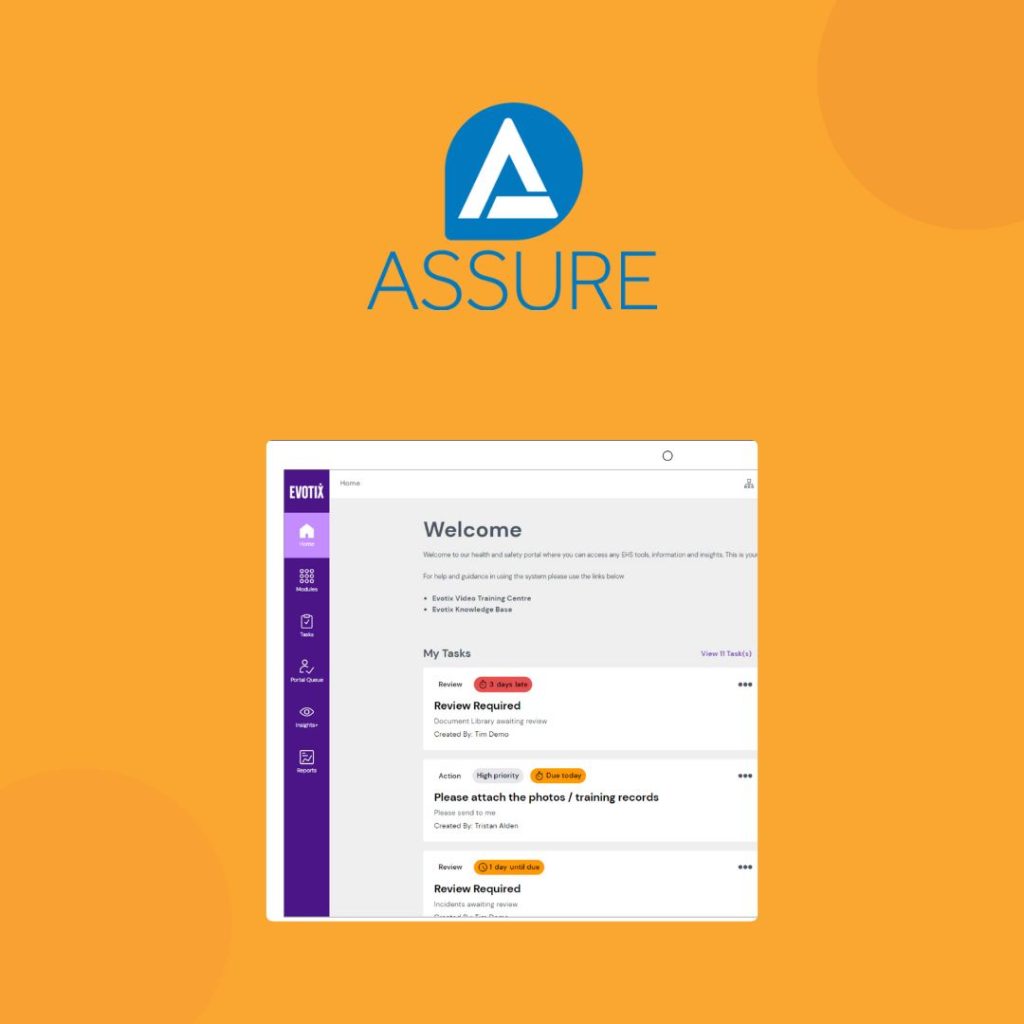
Assure is a robust audit and inspection platform designed for industries that require offline capabilities and detailed compliance tracking. In rail and public transport, Assure’s strength lies in its mobile-first design that works seamlessly in underground depots and remote trackside locations with poor connectivity.
Assure offers configurable audit checklists, offline data capture, and automated scheduling for pre-shift inspections, PPE audits, and depot walkthroughs. Its ability to sync data when connectivity is restored ensures that no inspection goes missing.
Core features
Audits & inspections: Create custom checklists for PPE audits, track-side checks, depot inspections, and isolation verifications
Offline data capture: Complete inspections on mobile devices without connectivity and sync automatically when back online
Incident reporting: Log incidents and near misses during inspections, attach photo evidence, and assign corrective actions
Task management: Assign follow-up tasks for overdue inspections or non-compliance findings with automated reminders
Document management: Store RAMS packs, isolation forms, and safety bulletins with version control and access permissions
Advanced features
Customisable templates: Tailor inspection templates to rail-specific regulations, fatigue policies, and COSHH requirements
Analytics & reporting: Generate compliance scorecards, trend heatmaps, and detailed audit reports for management reviews
Geolocation tagging: Record exact GPS locations for inspections and incident reports to verify work zone coverage
Integration capabilities: Export data to ERP, rostering, or EHS platforms for consolidated reporting
Constraints and functionality gaps
Limited fatigue tracking: While Assure supports general inspections, it does not include dedicated fatigue monitoring modules or hours tracking
Incident management scope: Incident reporting is strong during audits but does not provide full investigation workflows or root cause analysis tools
Pricing transparency: Standard pricing is not publicly listed; custom quotes are required and may vary significantly based on the number of offline users and templates
Pricing
Assure operates on a user-based subscription model. Pricing starts at £3 per user per month for basic audit and inspection capabilities. Advanced analytics and integrations are available at additional cost. Rail organisations should request a custom quote to factor in offline usage and template complexity.
Pros & cons
Pros:
Offline data capture ensures inspections can be completed in low-connectivity areas such as depots and trackside
Highly configurable templates for rail-specific audits and compliance checks
Geolocation tagging verifies inspection coverage across multiple sites
Automated task reminders reduce missed follow-ups and non-compliance
Cons:
No built-in fatigue tracking or dynamic risk assessment modules
Incident management is limited to logging within inspections, without full investigation workflows
Custom pricing may be higher for large user bases requiring offline access
#5 SafetyCulture

SafetyCulture is a mobile-first operations platform designed to capture field data instantly and foster a proactive safety culture. Rail and public transport teams benefit from its intuitive interface, which allows track maintenance crews, depot staff, and operations managers to conduct inspections, report issues, and collaborate in real time.
SafetyCulture’s strength lies in its easy-to-use mobile checklists, rapid issue reporting, and advanced analytics. It empowers frontline staff to identify hazards, log corrective actions, and escalate critical issues before they escalate.
Core features
Inspections & audits: Digitise inspections using customisable checklists for PPE audits, trackside safety walks, and depot walkthroughs
Issue reporting: Empower employees to report hazards, near misses, and equipment faults with photo and video evidence, fostering a proactive safety culture
Analytics & reporting: Gain actionable insights from collected data with interactive dashboards, trend charts, and compliance scorecards
Training management: Assign and track training programs such as fatigue awareness, safe isolation procedures, and manual handling
Task management: Assign actions from inspection findings, track completion status, and receive automatic reminders for overdue tasks
Advanced features
Asset management: Keep track of rail-mounted equipment, harness inspections, and depot tools with scheduled maintenance notifications
Integrations: Seamlessly integrate with other business systems such as rostering software, asset management platforms, and ERP solutions
Customisable templates: Create and modify templates to suit specific organisational needs, ensuring flexibility in audits and inspections
Constraints & functionality gaps
Limited fatigue monitoring: SafetyCulture focuses on inspections and issue reporting but does not provide dedicated fatigue tracking or hours worked modules
Cost considerations: The Premium plan at approximately £19 per user per month may be significant for large rail teams, especially when scaling up
Offline functionality: While inspections can be captured offline, some advanced reporting features require online access for full data synchronisation
Pricing
SafetyCulture offers a free plan that supports up to 10 users, includes 5 active templates, and stores data and evidence for up to 3 years. The Premium plan is priced at £19 per user per month and includes unlimited templates, advanced analytics, training management, integrations, and security features. Custom Enterprise plans are available for large rail operators with specific needs.
Pros & Cons
Pros:
User-friendly interface makes adoption easy for rail frontline staff
Comprehensive mobile inspection and issue reporting tools to capture field data in real time
Advanced analytics and dashboards help identify trends and areas for improvement
Integration capabilities enhance workflow efficiency and data synchronisation
Cons:
No dedicated fatigue tracking or dynamic risk assessment modules
Premium plan cost may be high for large rail teams
Offline functionality is limited for advanced reporting features
#6 Work Wallet
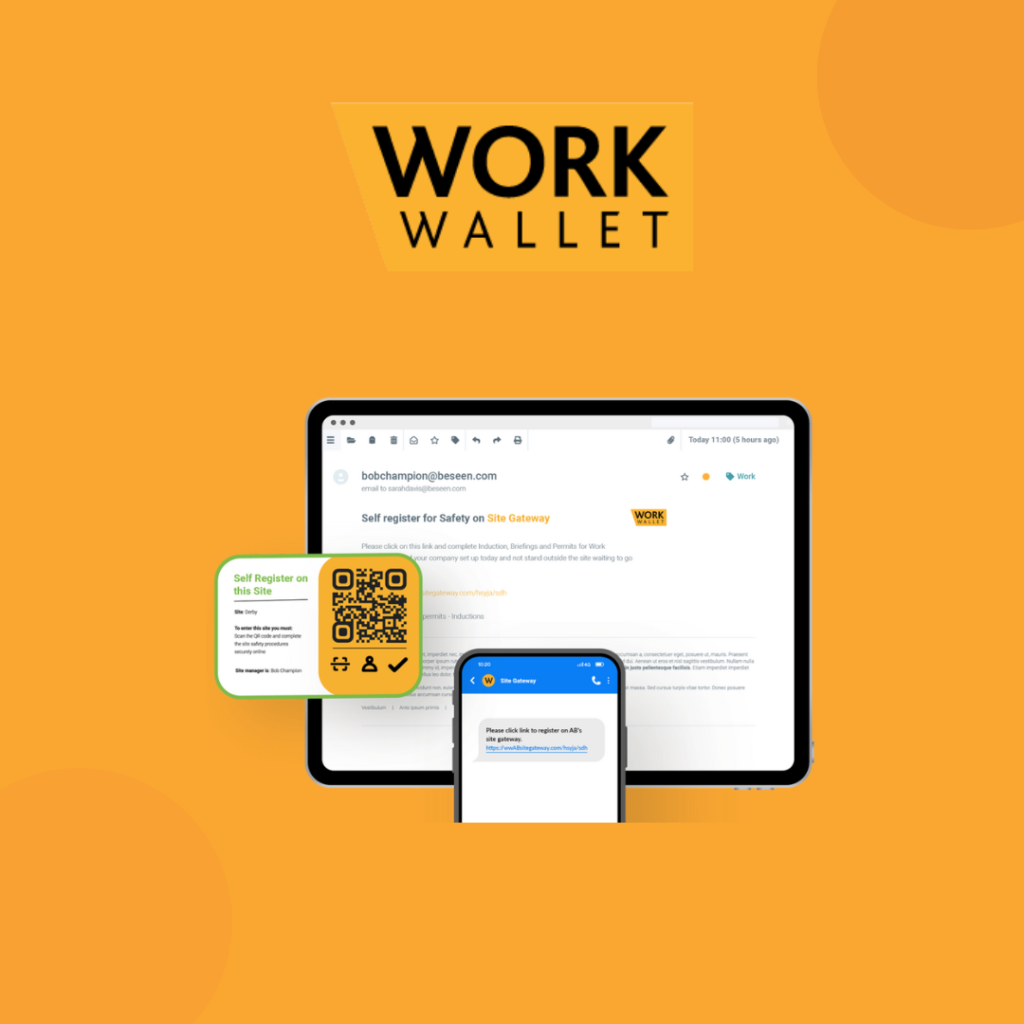
Work Wallet is a health and safety management platform that prioritises mobile access for contractor and frontline staff. In rail and public transport, Work Wallet’s ability to deliver site-specific inductions, RAMS packs, and COSHH sign-offs directly to mobile devices ensures that contractors and maintenance crews are compliant before they start work.
Work Wallet excels at managing contractor compliance, capturing evidence of inductions, and providing digital safety cards that summarise qualifications and training records. Its focus on mobile accessibility and offline capability makes it valuable for rail environments where connectivity can be sporadic.
Core features
Accident & incident reporting: Facilitate quick logging of incidents with photo evidence and configurable workflows for investigations and follow-ups
Audits & inspections: Conduct mobile inspections for PPE checks, track-side audits, and depot compliance with customisable checklists
Risk assessments: Create, manage, and review risk assessments for track maintenance, live rail work, and depot operations
Safety briefings & toolbox talks: Deliver and track safety briefings on fatigue awareness, live track hazards, and manual handling via mobile
Digital inductions: Provide site-specific inductions for contractors and new staff, ensuring they understand RAMS, COSHH, and fatigue policies before work
Permit to work: Manage high-risk tasks with digital permit workflows and approval tracking
Advanced features
Safety cards: Issue digital safety cards to employees and contractors, consolidating qualifications, training records, and compliance status in one location
ID & training records: Manage employee and contractor identification and training records for audits and compliance checks
Contractor gateway: Provide a portal for contractors to upload and manage their compliance documentation, ensuring they meet safety standards before starting work
Constraints and functionality gaps
Limited integration options: Work Wallet integrates with Azure Active Directory, but connections with other systems such as rostering or asset management may be limited
Learning curve: New users may require time and training to fully utilise all mobile features effectively, particularly in complex rail settings
Advanced reporting: While compliance data is captured well, bespoke reporting for fatigue or trend analysis may require exporting data to third-party tools
Pricing
Work Wallet offers a flexible pricing model starting at £1 per user per month. Pricing scales based on the modules selected such as inductions, audits, and permit to work. Rail organisations should contact Work Wallet directly to obtain a personalised quote based on user count and module requirements.
Pros & cons
Pros:
Mobile-first design ensures contractor compliance data is captured on site, even offline
Digital inductions and safety cards simplify contractor onboarding and compliance tracking
Customisable checklists for rail-specific audits and inspections
Contractor gateway provides centralised document submission and review
Cons:
Limited integration with rostering or asset management systems
Some advanced reporting may require data export to external analytics tools
Initial learning curve for complex rail compliance processes
#7 Cority

Cority is a comprehensive EHS management platform designed for large enterprises that need to integrate occupational health, safety, and environmental compliance. For rail and public transport organisations with complex operations, Cority offers a suite of modules that handle incident management, fatigue tracking, industrial hygiene, and sustainability reporting in one unified system.
Cority’s strength lies in its scalability, advanced data integration, and robust mobile solutions that support offline data capture. Its configurable workflows and powerful data visualisation tools make it a strong choice for national rail operators and large public transport agencies.
Core features
Occupational health management: Streamline management of health records, medical surveillance, and compliance with health regulations for rail staff
Safety management: Facilitate incident reporting, risk assessments, and safety audits to ensure safe track and depot operations
Environmental management: Track environmental metrics such as emissions from diesel-powered plant and waste disposal compliance
Industrial hygiene: Monitor exposure to track dust, cleaning chemicals, and lubrication fluids to protect employee health
Ergonomics: Evaluate and address ergonomic risks for depot maintenance tasks and office-based operations
Training management: Track employee training requirements for fatigue awareness, live track work, and safe isolation procedures
Document control: Manage RAMS packs, fatigue policies, and safety bulletins with version control and access permissions
Compliance management: Automate tracking of railway regulations and audit schedules for continuous compliance
Advanced features
Mobile solutions: Enable staff to perform inspections, report incidents, and complete fatigue check-ins via mobile devices, even offline
Data visualisation: Provide graphical representation of fatigue trends, incident hotspots, and audit outcomes for better decision-making
Risk management: Identify, evaluate, mitigate, and report on risks related to live track work, fatigue exposure, and heavy plant use
Inspection management: Monitor and review inspection findings for PPE compliance, trackside checks, and depot audits
Constraints and functionality gaps
Pricing transparency: Cority’s pricing is not publicly available and requires direct contact for tailored quotes, which may pose challenges during initial evaluation
Learning curve: The extensive feature set and customisation options can lead to a steep learning curve for new users; dedicated training and onboarding are essential
Integration capabilities: While Cority supports integration with multiple systems, setting up data connections with rostering or freight management platforms may require technical resources
Pricing
Cority uses a customised pricing model based on the specific needs and size of each organisation. As pricing details are not publicly disclosed, rail operators and transport agencies are encouraged to contact Cority for a personalised quote. This approach ensures that organisations invest in a solution that aligns with their EHS management objectives.
Pros & cons
Pros:
Comprehensive enterprise-level platform covering safety, occupational health, and environmental management
Robust mobile solutions with offline data capture for trackside and depot operations
Advanced data visualisation and configurable workflows for deep insights and process automation
Integration capabilities that allow for consolidation of EHS data across multiple systems
Cons:
Custom pricing model requires direct engagement, which can delay initial evaluation
Extensive feature set may overwhelm smaller teams; dedicated training is essential
Integration with rostering and freight management systems may need significant technical configuration
Choosing the best EHS software for rail & public transport
Selecting the right EHS software will help rail organisations maintain compliance, reduce fatigue-related incidents, and improve safety culture across track maintenance and depot operations. While each platform offers unique strengths, Evalu-8 EHS stands out as the most comprehensive, modular solution for real-time RAMS, fatigue management, and mobile inspections.
Book a demo of Evalu-8 EHS to see firsthand how the system can improve safety, streamline processes, and empower your rail and public transport teams in 2025 and beyond.
FAQs
Look for RAMS management, fatigue tracking, live incident reporting, mobile access with offline capabilities, and asset inspection scheduling tailored to track and depot environments.
Fatigue modules log hours worked, calculate risk scores based on shift patterns, trigger alerts when thresholds are exceeded, and generate reports to identify high-risk staff or shifts.
You can set up recurring or ad hoc checklists PPE audits, track-side inspections, fatigue reviews with automated reminders. Completed forms update centrally, giving real-time visibility across all depots.
RAMS (Risk Assessment Method Statements) modules let users generate job-specific RAMS, assign sign-off responsibilities, and store evidence that each rail worker reviewed and acknowledged safety controls before starting a shift.
Dashboards and exportable reports show RAMS sign-off status, incident trends, fatigue breaches, and asset reliability logs. You can generate audit trails for inspectors, including e-signatures, timestamps, and photo evidence.
